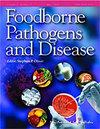Characterization of Antimicrobial Activities of Bifidobacterium lactis BB-12 and Their Inhibitory Effect Against Some Foodborne Pathogens.
IF 1.9
2区 农林科学
Q3 FOOD SCIENCE & TECHNOLOGY
引用次数: 0
Abstract
Bifidobacterium animalis subsp. lactis BB-12, a probiotic, has shown potential to promote health benefits and control pathogens. This study aimed to investigate the effectiveness of BB-12 and its cell-free supernatant (CFS) in inhibiting the growth of Listeria monocytogenes and Salmonella enterica serovar Typhimurium. To assess the antimicrobial activity of BB-12, agar well diffusion, disk diffusion, and minimum inhibitory concentration (MIC) tests were conducted. The bicinchoninic acid (BCA) assay was performed to measure the protein concentration in CFS. The study's results indicated that the BB-12 strain inhibited the pathogens' growth. The disk diffusion test using BB-12 showed inhibitory results ranging from 11 to 14 mm for both bacteria. The agar well diffusion test reported the zone of inhibition ranging from 11.6 to 16 mm for both bacteria. The MIC test was conducted as a confirmatory test, which demonstrated the highest inhibitory zone using 2 McFarland (6 × 108 CFU/mL) concentrations of probiotics on L. monocytogenes (44.98%) and S. Typhimurium (66.41%). The disk diffusion test revealed that the probiotic CFS had a significant inhibitory impact on S. Typhimurium with a 16.6 mm zone of inhibition. The BCA test findings indicated that the 24- and 48-h CFSs exhibited inhibitory properties against infections. Notably, the 24-h CFS, including a protein level of 78.47 μg/mL, demonstrated a more pronounced inhibitory impact on both pathogens. The findings highlight that utilizing the BB-12 strain and its CFS can serve as a viable approach to battle infections, enhancing food safety and public health.乳双歧杆菌 BB-12 的抗菌活性特征及其对某些食源性病原体的抑制作用
动物双歧杆菌亚种乳杆菌 BB-12 是一种益生菌,具有促进健康和控制病原体的潜力。本研究旨在调查 BB-12 及其无细胞上清液(CFS)在抑制单核细胞增生李斯特菌和伤寒沙门氏菌生长方面的有效性。为评估 BB-12 的抗菌活性,进行了琼脂井扩散、盘扩散和最低抑菌浓度(MIC)试验。还进行了双喹啉酸(BCA)测定,以测量 CFS 中的蛋白质浓度。研究结果表明,BB-12 菌株能抑制病原体的生长。使用 BB-12 进行的盘扩散试验显示,对两种细菌的抑制结果均为 11 至 14 毫米。琼脂井扩散试验结果表明,两种细菌的抑制区都在 11.6 至 16 毫米之间。作为确证试验,使用 2 McFarland(6 × 108 CFU/mL)浓度的益生菌对单核细胞增生性酵母菌(44.98%)和伤寒杆菌(66.41%)进行了 MIC 试验,结果显示抑制区最大。盘扩散试验表明,益生菌 CFS 对秋伤寒杆菌有显著的抑制作用,抑制区为 16.6 毫米。BCA 试验结果表明,24 小时和 48 小时 CFS 具有抑制感染的特性。值得注意的是,24 小时 CFS(蛋白质含量为 78.47 μg/mL)对两种病原体都有更明显的抑制作用。研究结果表明,利用 BB-12 菌株及其 CFS 可作为一种对抗感染的可行方法,从而提高食品安全和公共卫生水平。
本文章由计算机程序翻译,如有差异,请以英文原文为准。
求助全文
约1分钟内获得全文
求助全文
来源期刊

Foodborne pathogens and disease
医学-食品科技
CiteScore
5.30
自引率
3.60%
发文量
80
审稿时长
1 months
期刊介绍:
Foodborne Pathogens and Disease is one of the most inclusive scientific publications on the many disciplines that contribute to food safety. Spanning an array of issues from "farm-to-fork," the Journal bridges the gap between science and policy to reduce the burden of foodborne illness worldwide.
Foodborne Pathogens and Disease coverage includes:
Agroterrorism
Safety of organically grown and genetically modified foods
Emerging pathogens
Emergence of drug resistance
Methods and technology for rapid and accurate detection
Strategies to destroy or control foodborne pathogens
Novel strategies for the prevention and control of plant and animal diseases that impact food safety
Biosecurity issues and the implications of new regulatory guidelines
Impact of changing lifestyles and consumer demands on food safety.
 求助内容:
求助内容: 应助结果提醒方式:
应助结果提醒方式:


